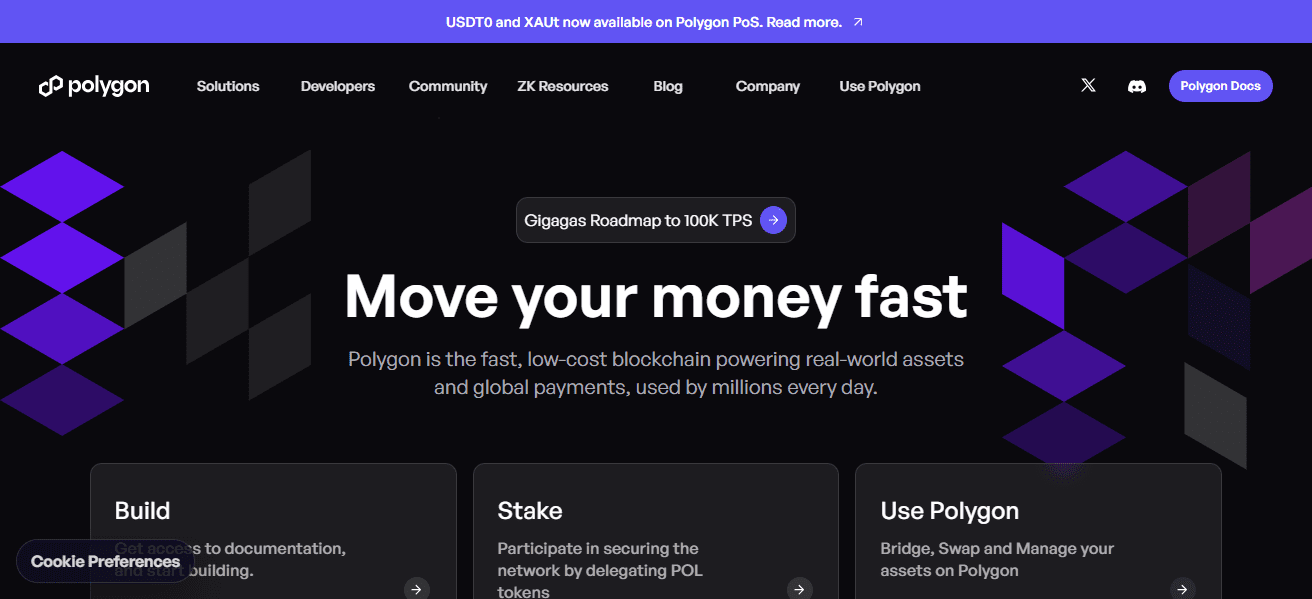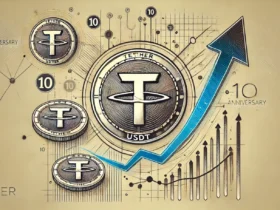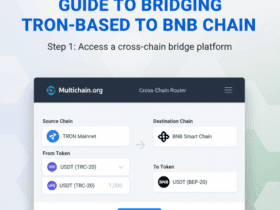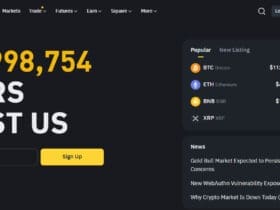In this article, I analyze the Polygon Cross-Chain Bridges envisioned for 2025, discussing their role in facilitating the transfer of assets between Polygon and various blockchain networks.
As the need for interoperability is becoming pivotal in decentralized finance, these bridges are instrumental in advancing liquidity, availability, and user interaction throughout the crypto ecosystem.
What are Polygon Cross-Chain Bridges?
Polygon cross-chain bridges are unique frameworks that allow users to transfer tokens, stablecoins, and NFTs from other blockchains to Polygon and vice versa.
They serve as a gateway for interoperability, allowing for the transfer of value between Ethereum and other blockchains like BNB Chain, Solana, and other Layer-2 blockchains.
These bridges facilitate cross-chain trading, enhance liquidity, and widen the access for DeFi services. They help improve network fragmentation, reduce transaction costs and enhance user friendliness, thereby, increasing the utility of Polygon as a multi-chain crypto trading hub in 2025.
How We Choose Polygon Cross-Chain Bridges In 2025 List
Security & Audits – Only those bridges were included that have put in place strong security protocols such as multi-signature approvals, and audits or have undergone third party audits.
Ecosystem Support – Polygon’s connectivity with Ethereum, BNB Chain, Solana and L2 is regarded as a major advantage. Therefore, we chose those bridges that serve polygon and major blockchains.
Liquidity & Volume – For reliability’s sake, we had a preference to bridges with higher liquidity and trading volume.
Transaction Speed – Efficient time and cost settlement for any business is a vital success factor. Hence, fast confirmation times were a key factor.
Low Fees – We focused more on net cost to the user. Therefore we prioritized bridges that charge low expenses.
User Experience – Valuable were those interfaces that are visually easy and intuitive, user friendly where even non-experts can seamlessly bridge tokens.
Adoption & Popularity – Bridges that are extensively adopted were prioritized alongside those with a strong reputation, high community trust and recognition.
Innovation – Considered were those with noteworthy protocols such as asset swaps on the same network, zero-slippage transfers and multi chain routing.
Key Points & Polygon Cross-Chain Bridges In 2025 List
| Bridge Name | Key Point |
|---|---|
| Defiway | Decentralized, user-friendly interface; supports EVM chains, Tron, Solana; audited by CertiK. |
| Polygon PoS Bridge | The official and secure means to transfer assets between Ethereum and Polygon. |
| Across | High-performance, fast bridge supporting Ethereum, BNB Chain, plus EVMs. |
| Stargate | Allows fast or economy transfers across many chains with competitive fees. |
| Synapse | Scalable AMM-based bridge supporting dozens of chains; strong TVL and liquidity. |
| Orbiter | Emphasizes security via multi-sig; supports 20+ chains, reliable for rollups. |
| Hop | Fast, simple bridge optimized for rollups (e.g., Ethereum ↔ Polygon). |
| Meson | Focuses on security and efficiency; zero-slippage swaps across 20+ blockchains. |
| Symbiosis | User-friendly, cost-competitive bridge engine for EVM & non-EVM chains. |
| Wormhole / Portal | Leading interoperability protocol bridging many chains, including Polygon. |
10 Polygon Cross-Chain Bridges In 2025
1.Defiway
Defiway is an automated decentralized cross-chain bridge aimed at streamlining and minimizing the cost of the transfer of assets. It supports Polygon, Ethereum, BNB Chain, Tron, Solana, and other EVM compatible blockchains. For user’s ease and comfort, the traditional bridging interface is not used.

Transactions as a polygon cross-chain bridge are audited by CertiK. Protecting Defiway’s system is crucial as automated token transfers are prone to fraud. In the traditional marketplace, Defiway is used lexicon for swift transfer and with minimum fees. Defiway serves traders and investors who move assets often and prioritizes transparency and safety.
2.Polygon PoS Bridge
The Polygon PoS Bridge is the official bridge created by Polygon Labs for connecting Ethereum with Polygon’s PoS chain. It is the most trusted, efficient, and popular pathway for transferring ERC-20 tokens and NFTs from Ethereum to Polygon.
The bridge’s reliance on the proof-of-stake security model ensures transaction decentralization and high security. While moving assets from Ethereum to Polygon is relatively effortless, withdrawals to Ethereum take longer because of checkpoint finality.

Regardless, it is still the most preferred option for developers, dApps, and investors who require the most dependable Ethereum–Polygon interoperability.
3.Across
Across is a cross-chain bridge with a focus on security, speed, and cost. It offers cross-chain services with Ethereum, Polygon, Arbitrum, Optimism, and other EVM compatible chains.
Unlike traditional validator bridges, Across employs a unique model whereby payment of minimal fees is possible on almost instantaneous transfers because of the use of relayers and liquidity pools. Its design offers protection to the users from the common bridging risks while maintaining capital efficiency.

The protocol is also governed by the UMA framework’s optimistic oracle, which provides a layer of decentralized verification. Across provides Polygon users with rapid and secure cross-chain bridging services, making it one of the most reliable options available.
4.Stargate
Stargate is a next-generation liquidity bridge that is built on LayerZero and offers liquidity interoperability with Polygon and many other chains. Unlike other bridges, Stargate performs native asset swaps instead of wrapped tokens.
This feature makes transactions easier and more efficient. Stargate enables traders and DeFi users to perform transactions with instant finality, deep liquidity, and very low fees. These features make Stargate very popular.

Its liquidity pool balancing technology known as “Delta Algorithm” addresses the bridging problem of maintaining liquidity pool balance across chains. Supported by strong adoption, Stargate has rapidly become a leading choice among polygon users looking for dependable, accessible, and inexpensive cross-chain transfers.
5.Synapse
Synapse belongs among the largest cross-chain interoperability protocols by total value locked (TVL). The platform connects Polygon with dozens of other chains like Ethereum, Avalanche, BNB Chain, and Arbitrum.
Synapse features a unique automated market maker (AMM) that facilitates cross-chain stablecoin swaps and token bridging at minimal slippage. Its infrastructure is focused on scalability.

This enables EVM and non-EVM ecosystems as well as Synapse offers a robust developer framework for building cross-chain applications. With strong Polygon community support, Synapse remains one of the most reliable and widely adopted bridges for Polygon in 2025.
6.Orbiter
Orbiter Finance is a simple and secure cross-rollup bridge linking Polygon with Ethereum and other Layer-2 rollups such as Arbitrum, Optimism, zkSync, and StarkNet. It is designed to be a trust-minimized bridge protecting assets with multi-signature and smart contract security.

Orbiter focuses on rapid and low-cost transfers of native tokens, avoiding wrapped assets. Such simplicity and speed are crucial for users who frequently transfer assets between Polygon and Layer-2 networks. Supporting over 20 chains and with a developing ecosystem, Orbiter is a reliable and efficient bridge solution for Polygon users.
7.Hop
Hop Protocol is a rollup-centric bridge designed to integrate Polygon, Ethereum, and Layer-2 scaling solutions such as Optimism and Arbitrum. It enables users to transfer assets instantaneously and at a fraction of the cost with the use of a liquidity provider system.
Prioritizing scalability and rollup efficiency, Hop enables instant transfer of stablecoins and ETH equivalents. The fragmentation of liquidity is addressed by Hop through the creation of hTokens

Which are intermediate tokens redeemable instantly on other chains. For DeFi users connected to multiple Ethereum rollups and Polygon, Hop provides speed, efficiency, and trustless security.
8.Meson
Meson is a stablecoin bridge with a focus on efficiency, liquidity, and low fees. It is a stablecoin bridge with a focus on efficiency, liquidity, and low fees, serving over 25 blockchains, including Polygon.
For many, backed stablecoin swappers like USDT, USDC, or DAI are a nightmare, due to slippage on their exchanges. Unlike many competitors, Meson emphasizes zero-slippage swaps ensuring that users are provided exactly the amount required on their transfer.

It is especially appreciated by traders, arbitrageurs, and institutions for Polygon’s liquidity maneuvers with other ecosystems, due to its deep stablecoin liquidity and focus on interoperability. Security is at the core of Meson’s design, as the platform uses multi-layer verification processes to safeguard transactions.
9.Symbiosis
Symbiosis Finance is a multi chain Polygon liquidity protocol that enables cross chain transfers with a myriad of blockchains, including EVM and non EVM networks. Its bridge focuses on user-friendly design, offering one-click swaps that wrap, route, and settle the tokens automatically.

Symbiosis also supports stablecoins and other governance tokens. While solving lack of cross chain interaction on low quality manual work, Symbiosis focuses on relatively fast settlement times and low transaction fees. Symbiosis focuses on popularity by prioritizing the needs of beginners at Polygon bridge.
10.Wormhole / Portal
Wormhole (often referred to as Portal Token Bridge) is perhaps the most well-known protocol for interoperability in Web3. It links Polygon to over twenty other blockchains, including Solana, Ethereum, Aptos, and BNB Chain.
Unlike smaller bridges, Wormhole uses a network of decentralized guardians to secure and verify transaction relaying across chains, providing speed and security. It additionally supports the transfer of NFTs, the interoperability of governance tokens, and cross-chain-defi.

With institutional backing, as well as extensive adoption and liquidity, Wormhole stands as a foundational pillar in the cross-chain ecosystem. For users of Polygon, in 2025, it will offer unparalleled ease and multi-chain connectivity.
Conclsuion
Lastly, Polygon cross-chain bridges will be pivotal in 2025 for smooth transfers of assets, enhancing liquidity, and integrating different blockchain networks. They allow users to actively participate in DeFi, NFTs, and cross-chain assets.
With the growing focus on interoperability, these bridges will help sustain Polygon’s role as a crucial and flexible network in the changing crypto world.
FAQ
Most leading bridges use multi-signature security, audits, or decentralized validator systems, but users should always verify trustworthiness before large transfers.
The Polygon PoS Bridge is the official and most trusted option for transferring assets between Ethereum and Polygon.
Protocols such as Meson and Symbiosis are known for minimal costs, particularly for stablecoin transfers.












Got a Questions?
Find us on Socials or Contact us and we’ll get back to you as soon as possible.